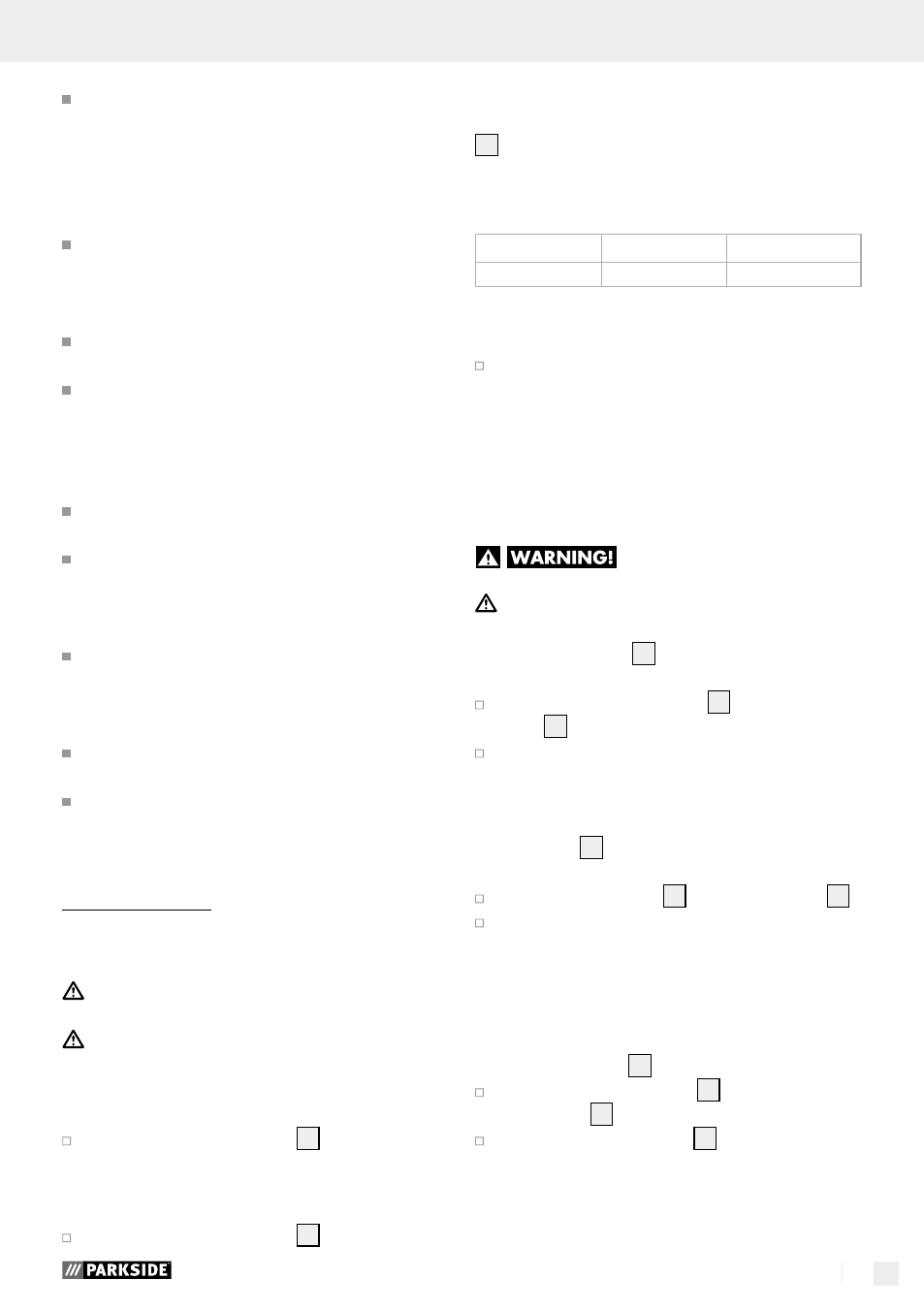Operation, Preparing the device for use, Changing the nozzle – Parkside PHLG 2000 B1 User Manual
Page 33

33
GB/MT
Do not work in the vicinity of easily ignitable
gases or materials.
Heating of plastics, paints, varnishes etc. can
lead to the creation of gases that are hazard-
ous to health. Make sure you always have
adequate ventilation.
Let the device cool down completely before
you put it into storage. Always place your
heat gun down on its end, with the nozzle
pointing upwards.
In addition, you should never leave the device
working unattended.
When taking a break from your work, before
carrying out any tasks on the device itself (e.g.
changing the nozzle) or when you are not
using the device, always pull the mains plug
out of the mains socket.
Do not direct the device at the same spot for
too long a period.
Maintain a distance between the jet outlet
nozzle and the workpiece or the surface being
heated. An air blockage could lead to over-
heating of the appliance.
Pay heed to the direct working area and also
to its surroundings. The heat produced could
reach to inflammable articles located out of the
visible area.
Always keep the device clean, dry and free
of oil or grease.
Never use the device for a purpose for which it
was not intended.
Q
Operation
Q
Preparing the device for use
CAUTION! When using the device, never
allow the ventilation slots to be covered.
CAUTION! DANGER OF BURNS! Do not
touch the hot nozzle.
Switching on the device:
Press the ON / OFF switch
2
into setting “I“
or “II“.
Switching off the device:
Press the ON / OFF switch
2
into setting “0“.
Adjusting the air quantity and temperature:
You can use the temperature and air quantity control
2
to set two different blower levels. It is therefore
possible to select the appropriate quantity of air and
temperature in accordance with the intended use:
Setting I
300 l / min
350 °C
Setting II
500 l / min
550 °C
Use as free-standing unit / during
cooling (see Fig. D):
Always set the device down upright on
a level surface, this will allow
· you to have both hands free
· the device to cool
Q
Changing the nozzle
Too much heat causes paints
and plastics to ignite.
CAUTION! Do not inhale the resulting vapours.
Protector nozzle
4
– for removing paint
and varnish (see Ill. B):
Place the protector nozzle
4
on the outlet
tube
3
.
The spatula shape of the nozzle ensures the air
is properly directed. Use a separate spatula for
removing paint or varnish.
Flat nozzle
5
– for detaching glues,
softening paint (see Ill. C):
Place the flat nozzle
5
on the outlet tube
3
.
Do not apply heat for too long a period, as
burnt paint becomes much more difficult to
remove. Many glues can be softened by warm-
ing. Glued connections can then be detached
and excess glue removed.
Reducing nozzle
6
– for welding plastic:
Place the reducer nozzle
6
on the
outlet tube
3
.
Use the reducing nozzle
6
for heat-shrinkable
sleeves and film.
General safety advice for electrical power tools / Operation
General safety advice for electrical power tools
